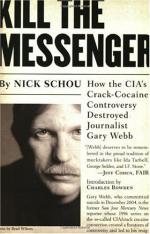|
This section contains 4,042 words (approx. 14 pages at 300 words per page) |

|
As extreme as some cocaine-induced behaviors can be, they are relatively mild when compared with the behavior induced by crack, a derivative of cocaine. In 1985, when the price of cocaine had soared to $150 a gram, plastic vials containing what looked like tiny soap chips began selling on the streets of low-income neighborhoods for $5 to $10 a "rock." Crack cocaine had arrived on America's streets and, unlike pricey cocaine, just about anyone who wanted crack could afford it.
The active ingredient of crack is cocaine. Working in illicit "kitchens," individuals manufacture crack by adding ammonia or sodium bicarbonate and water to pure cocaine, drying the mixture, and then crumbling the residue into small rocks. Adulterated this way, a gram of cocaine makes enough crack to satisfy many users.
Though it is made from a relatively small amount of powdered cocaine, crack is extremely potent...
|
This section contains 4,042 words (approx. 14 pages at 300 words per page) |

|




